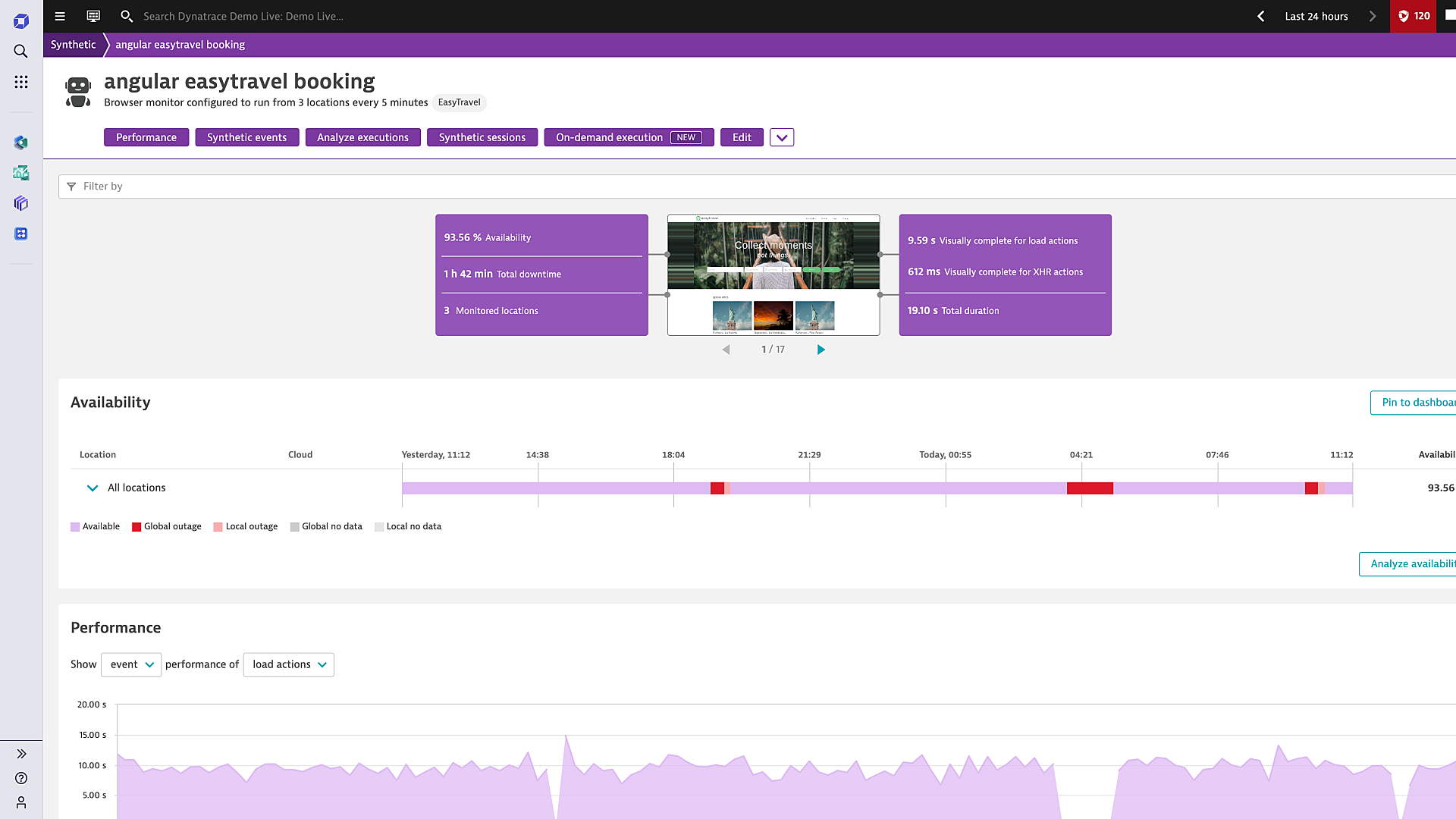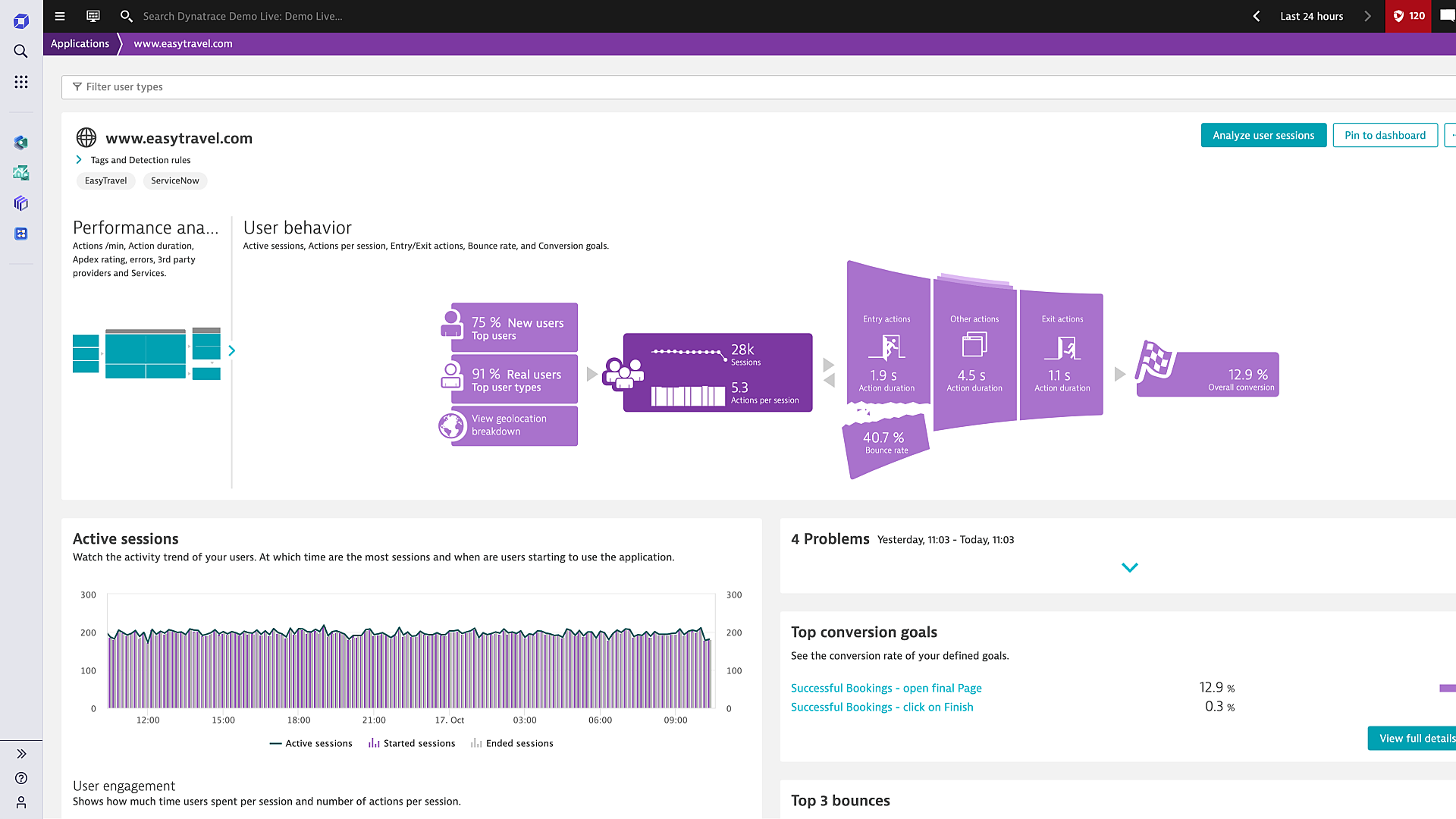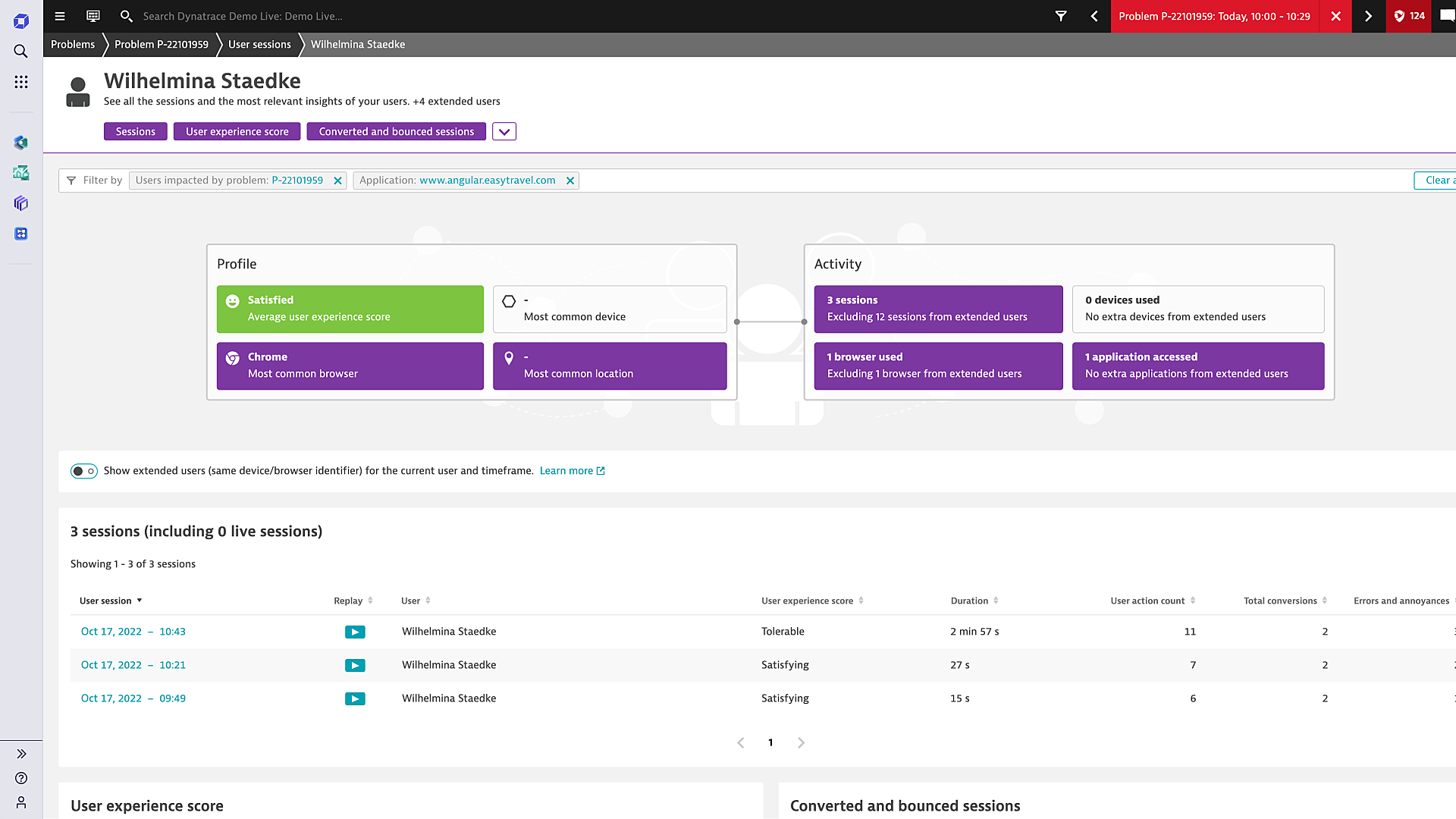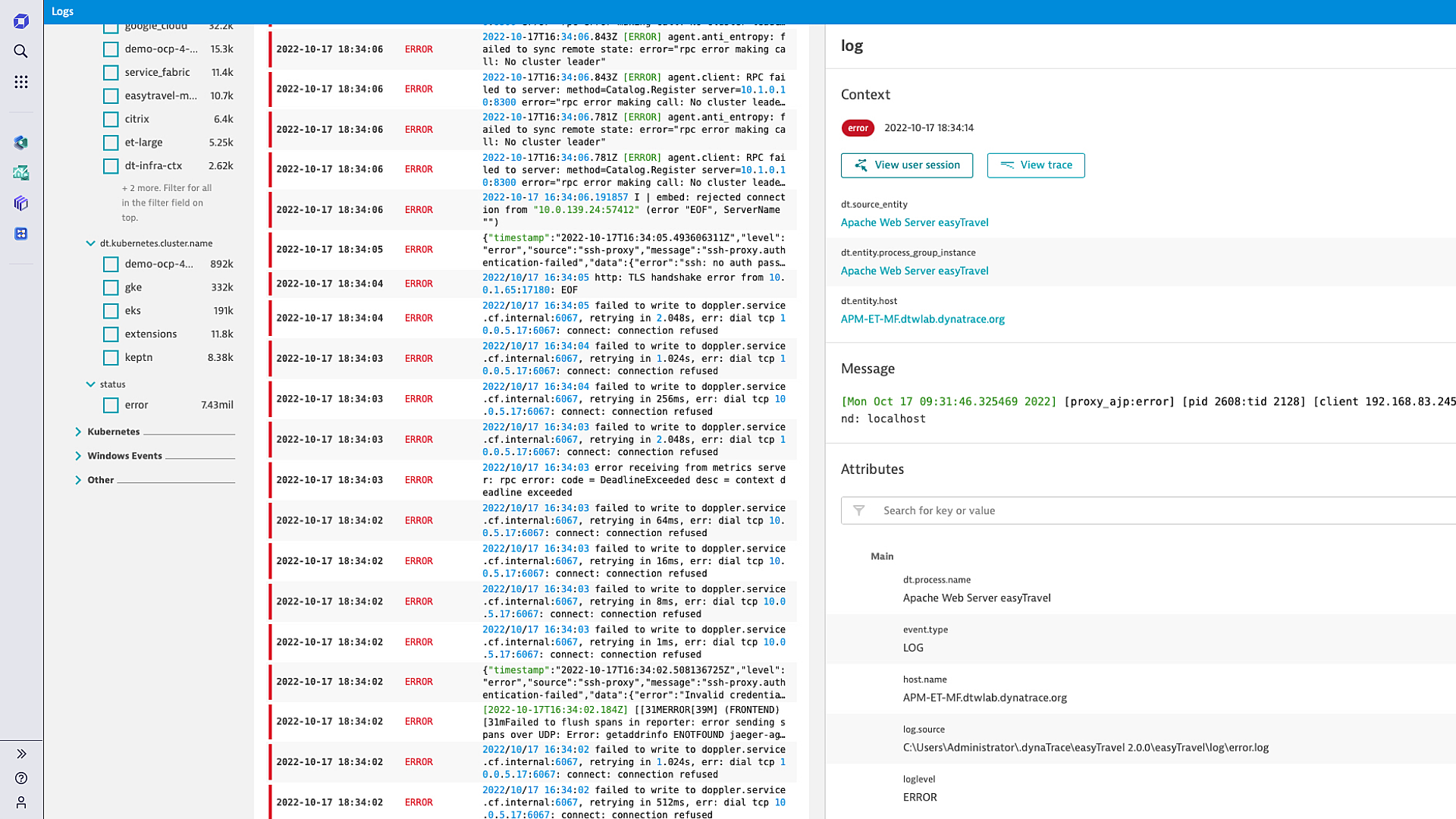
Digital Experience
Improve user experiences with best-in-class digital experience monitoring. Ensure every application is available, functional, fast, and efficient across every channel including mobile, web, IoT, and APIs.
Instantly analyze digital experience data with full context
Unify, store, and contextually analyze massive volumes of digital experience data with speed and cost-efficiency using a causational data lakehouse.
Application insights and availability
Gain deeper insight into the digital experience of your applications and deliver a better end-user experience through root cause analysis with tracing, logs, and metrics in context, including logs connected directly to user sessions.

Interactive tour
Hear what your users are telling you
Stop guessing. Start optimizing. We use observability and advanced AIOps on a unified platform to give teams the precise, automated insights and context they need to proactively deliver better customer experiences and drive better business outcomes.
Take an interactive tour of the Dynatrace platform to see how.
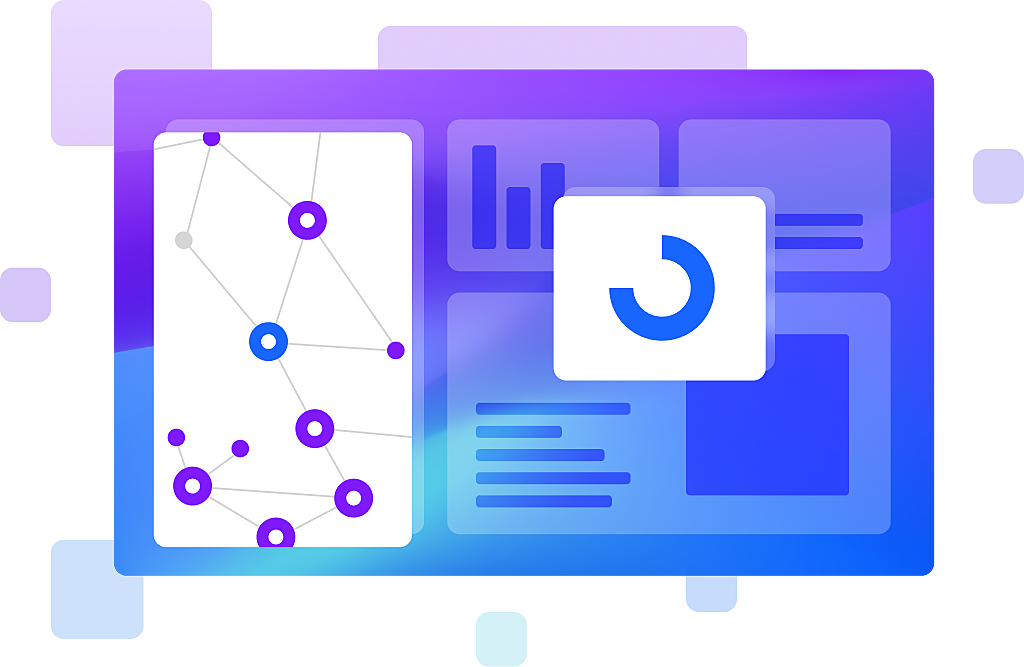

Dynatrace is a G2 Leader in Digital Experience Monitoring (DEM)
Powerful core technologies
Get precise answers and automation through hypermodal AI, with automatic discovery and topology mapping across billions of dependencies.
-
Davis AI
Our hypermodal AI uniquely combines predictive AI, causal AI, and generative AI. Davis® AI uses high-fidelity topology, metrics, traces, logs, and user data to deliver precise answers, intelligent automation, and AI recommendations.
-
AutomationEngine
Our answer-driven automation technology leverages causal AI to intelligently power BizDevSecOps workflows throughout multicloud ecosystems.
-
AppEngine
Our secure, serverless, auto-scaling runtime environment makes it easy to create custom, compliant, data-driven apps that address the use cases most important to you.
-
Grail
Our massively parallel processing (MPP) data lakehouse is purpose-built to ingest, store, and run lightning-fast analytics on observability, security, and business data with high performance and at scale.
-
Smartscape
Our dynamic topology mapping technology automatically identifies and maps interactions and relationships between applications and the underlying infrastructure. As new microservices come up or go away, the Smartscape topology map continuously updates in real-time.
-
OpenPipeline
Our high-performance stream processing is designed to ingest, process, enrich, contextualize, and persist data from any source, in any format, at any scale.
-
OneAgent
Our single agent technology deploys only once on a host and instantly starts collecting all relevant metrics along the full application-delivery chain. Install it and forget it—we take care of everything.
-
PurePath
Our patented distributed tracing and code-level analysis technology automatically integrates high-fidelity distributed tracing with user experience data and data from open-source technologies including OpenTelemetry and code-level analytics.
Explore customer stories
End-to-end observability through one unified platform
See how we cover it all in one automatic, AI-powered platform.
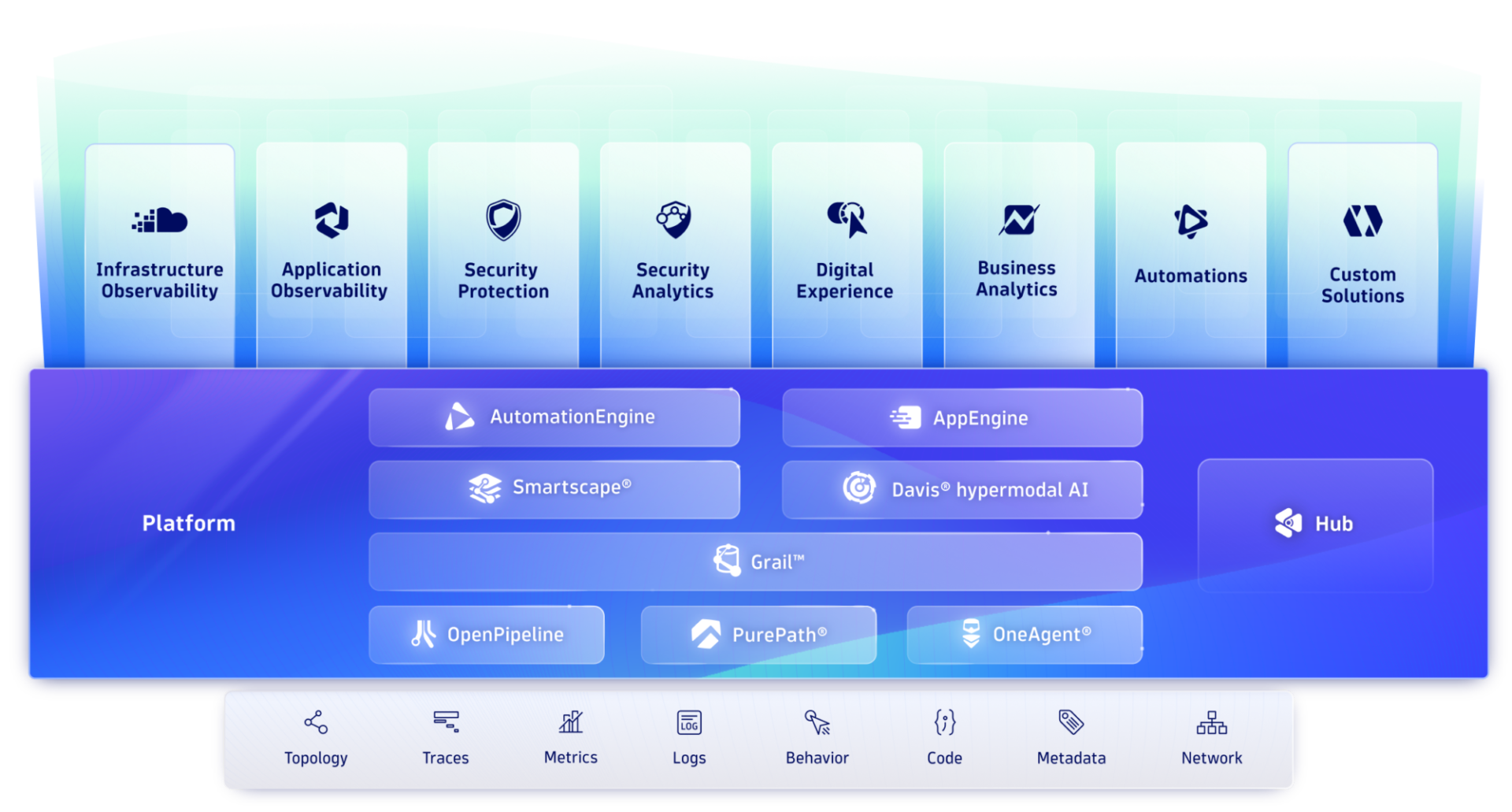
Try it free

A Leader in the 2023 Gartner® Magic Quadrant™ and ranked #1 in the Critical Capabilities for APM and Observability reports
See why we’re positioned furthest for Vision and highest for Execution in the Magic Quadrant, and ranked #1 in all Use Cases in the Critical Capabilities Report for Application Performance Monitoring and Observability.



